Meet The 25-Year-Old Cyclist Working To Make Brooklyn’s Streets Safer
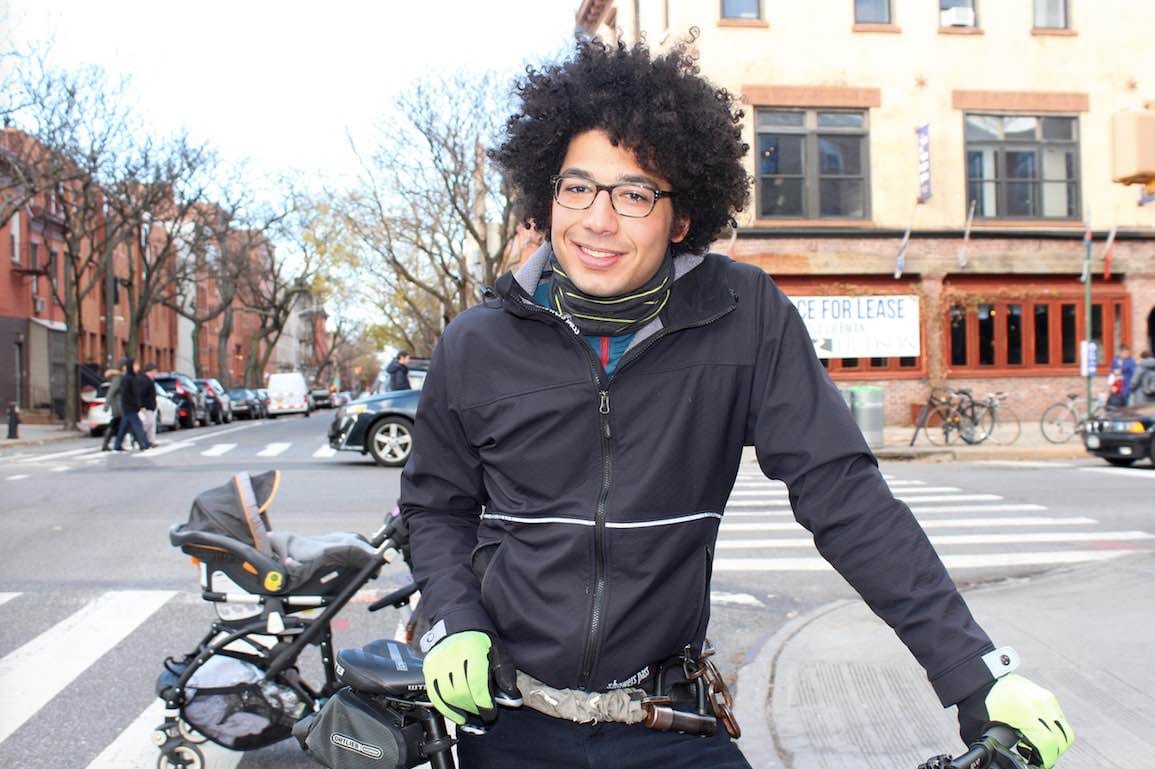

In what will turn out to be the final days of the Cobble Hill tavern Buschenschank, at a table pushed up against an open window that looks out at the intersection of Court and Sackett Streets, 25-year-old Bahij Chancey is sipping an Oktoberfest beer and reminiscing about the semester he spent studying abroad in Copenhagen.
It was the first time he fully understood what it means for a city to have bike infrastructure built into its core: for every street, every intersection, to have been designed for more than just cars. A budding urbanist and avid cyclist, he was struck by the realization that with good planning, bikes could be a viable means of transportation.
“You’re starting to see it more often here in New York,” he says, “Particularly, I feel like, in Brooklyn.” He trails off as his gaze, framed by black full-rim glasses, is drawn to the sidewalk, where a man is slowly cycling by, a child in a seat attached to the back of his bike. A second, small girl pedals her kid-sized bike alongside him.
“Yeah, you’re seeing it all over now.”
Chancey, a community activist and rain-or-shine bike commuter, would know. Because like anyone who tries to navigate New York’s busy streets on two wheels, and to perhaps an even great extent, he’s made it his business to look.
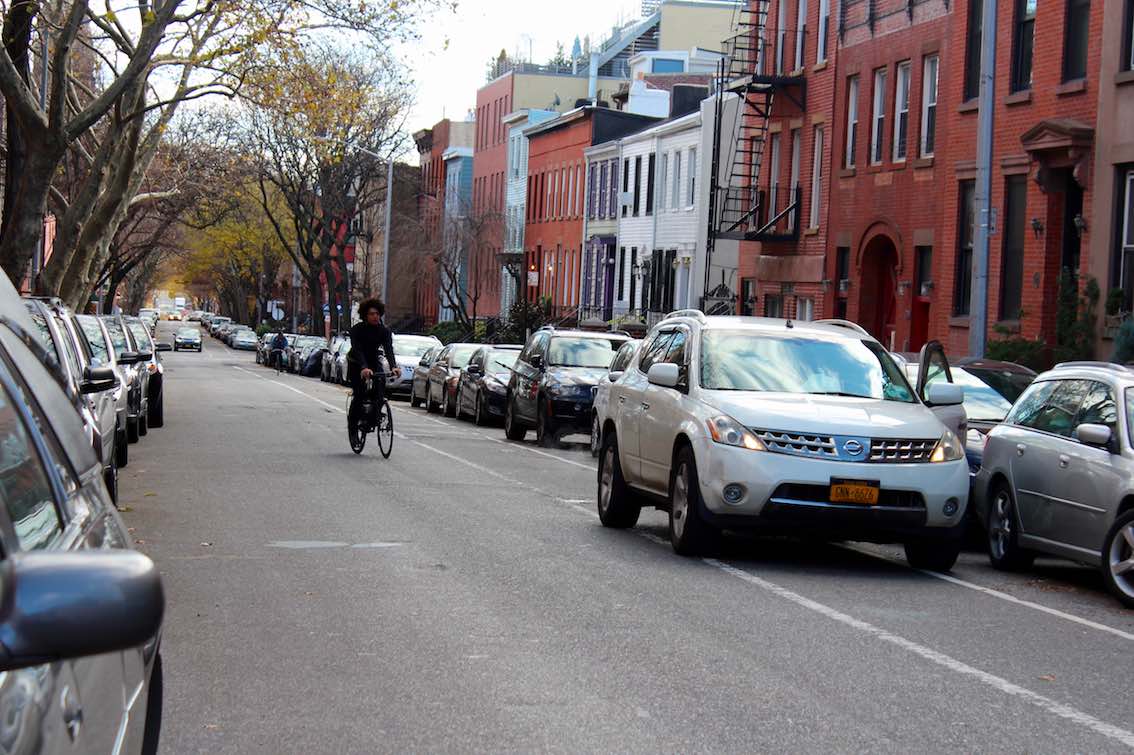
A native of the Manhattan neighborhood of Tribeca, Chancey’s been navigating the city on two wheels since his young adulthood, when biking was a sign of independence and also just the most convenient way to get around.
By 2009—about two decades after the start of Copenhagen’s modern biking renaissance, and around the same time U.S. cities like Boston and San Francisco were beginning to build up their cycling infrastructure—New York had gained one of its first protected bike lanes. It just happened to follow the route Chancey was already taking from his home on Hudson Street up 8th Avenue to school.
In the years since then, while Chancey was at Yale earning his BFA in architectural design and later settling into a rented apartment in Cobble Hill, New York’s bike infrastructure continued to expand. The city’s five boroughs are now home to over a thousand miles of bike lanes, and a bike-sharing system introduced in 2013 has so far added 8,000 bikes to the roads.
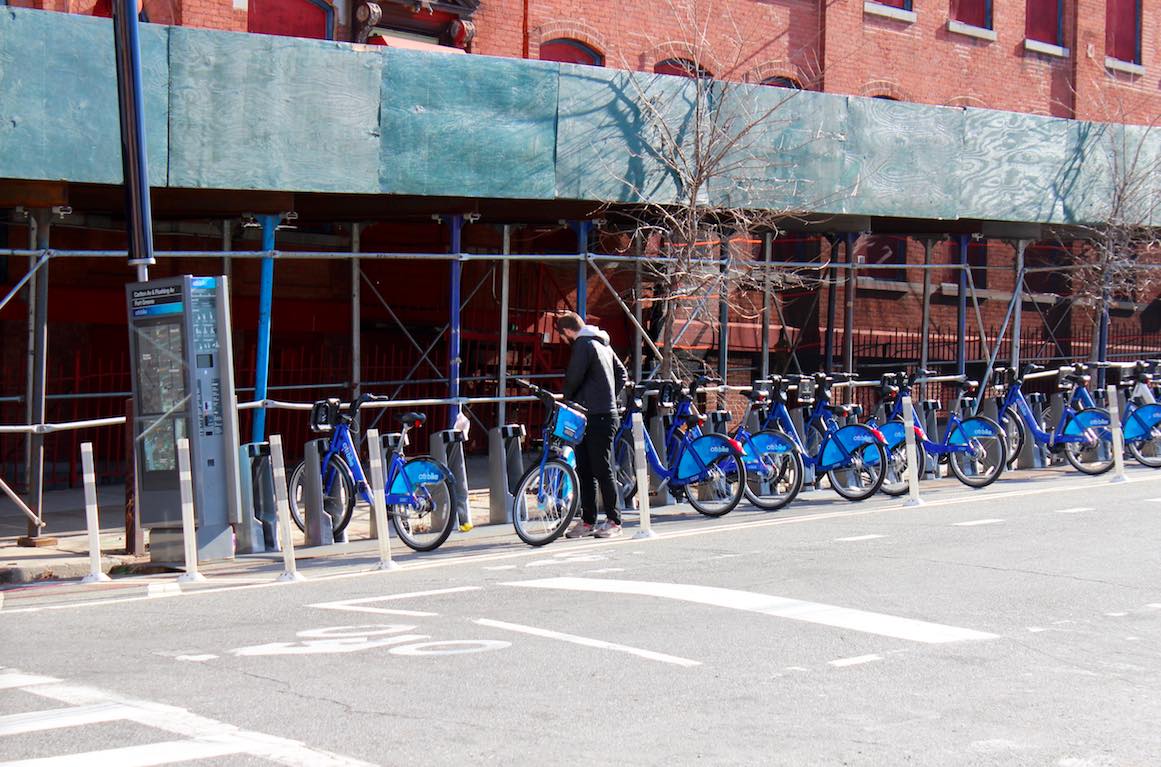
These days, three-quarters of a million New Yorkers report regularly riding a bike; they make up a small but not insignificant 2.5 percent of the city’s commuters. That’s still nothing like Copenhagen, where more than half of the population bikes regularly and in relative safety to work and school. But according to Chancey, they’re only becoming more normalized.
“I’m not a spandex biker.” He explains this more than once, making clear that he’s not your stereotypical (read: white and middle-aged) recreational cyclist. Instead Chancey, who identifies as Black Arab-American, is more likely to be spotted on his way to work—he’s a development associate at the AmeriCorps program Green City Force—sporting business casual, his voluminous hair tied back in a ponytail and held down with a bandana to fit beneath a helmet.
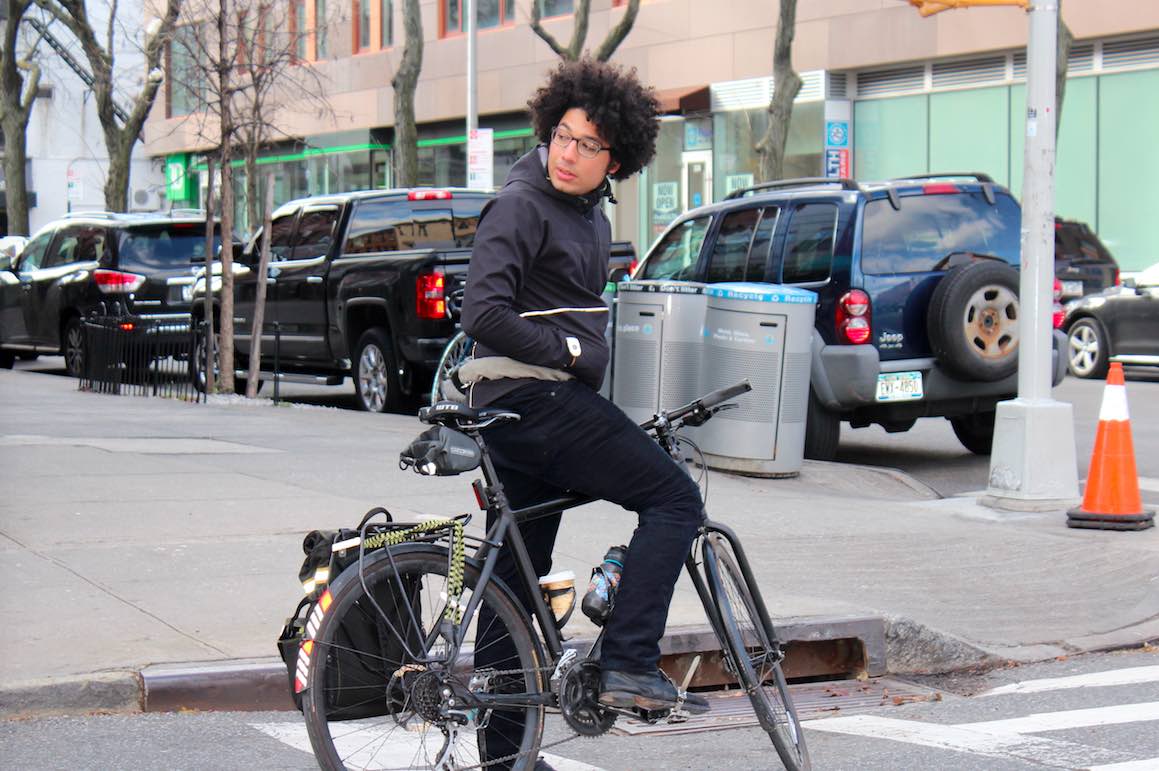
His morning commute, on a Cannondale Bad Boy outfitted with a rack and fenders, takes him on a 25-minute route from Jay Street to the Flushing Avenue bike path and onward to northern Bed-Stuy. During the winter, he adds another 15 minutes just for piling on warm layers. But the alternative, a speedy one-train, seven-stop commute of most New Yorkers’ dreams, doesn’t interest him. Once you build up the physical stamina and the psychological comfort to bike, he insists, “you see it as the most convenient form of transportation by far.”
It’s still not necessarily the safest, though, as New York is still far from being named the next Copenhagen, where in 2014, the most recent year for which data is available, there was only one cyclist death. As of the end of this October, New York motorists had already struck and killed 17 people on bikes, surpassing last year’s 15 fatalities with several months still to go.
Most bikers who say they practice defensive cycling, and the few who are either ignorant or dismissive of traffic laws, find themselves occupying a tense space between victim and menace, and Chancey is no exception. “It’s not like I don’t run red lights,” he explains, “but from my perspective, it doesn’t compare to…” He looks out the window: “This cop running this fucking red light right now, for no reason.”
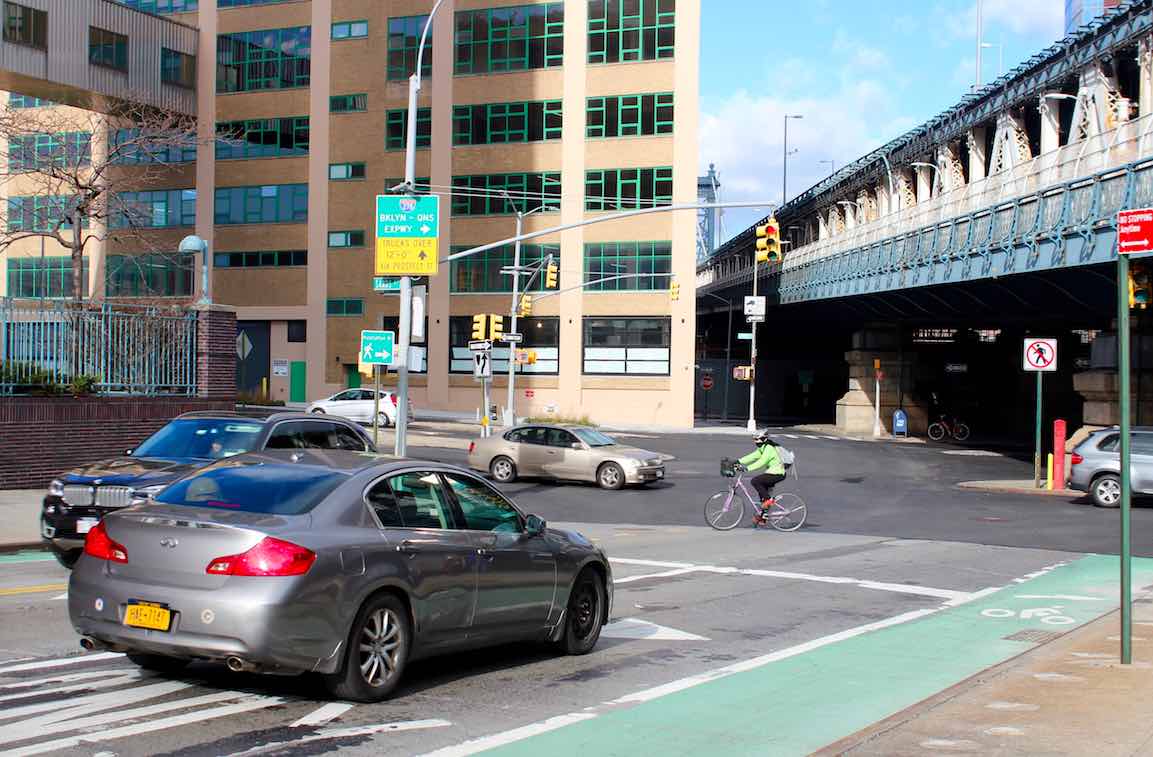
The timing was great, if not entirely unexpected. Start paying attention to the behavior that drive cyclists crazy—cops parking in bike lanes, to take one major example—and you’ll start noticing these injustices everywhere. Chancey shakes his head. “That was the perfect illustration of everything I want to talk about right now.”
Chancey first got involved in the world of bike activism in the winter of 2013, when he joined People First on Atlantic Avenue, a sub-committee of the advocacy group Transportation Alternatives which courts the support of elected officials and local businesses to advocate for infrastructure improvements that can calm the busy corridor running from the East River in Brooklyn to Jamaica in Queens. He’s since become co-chair of TA’s Brooklyn Activist Committee, taking on the responsibility of running its monthly meetings and organizing its members to “reclaim New York City’s streets from the automobile.”
The group’s message, spread through demonstrations, petitioning and its members insistent presence at community board meetings and city council hearings, is one that not everyone, particularly drivers, is ready to hear. Opposition to the expansion of Citi Bike stations and protected bike lanes in the district covered by Chancey’s community board can get ugly.
Chancey, who’s never driven a car, made local headlines last year when his complaints about poor traffic enforcement on Jay Street provoked the 84th Precinct into blocking him on Twitter.
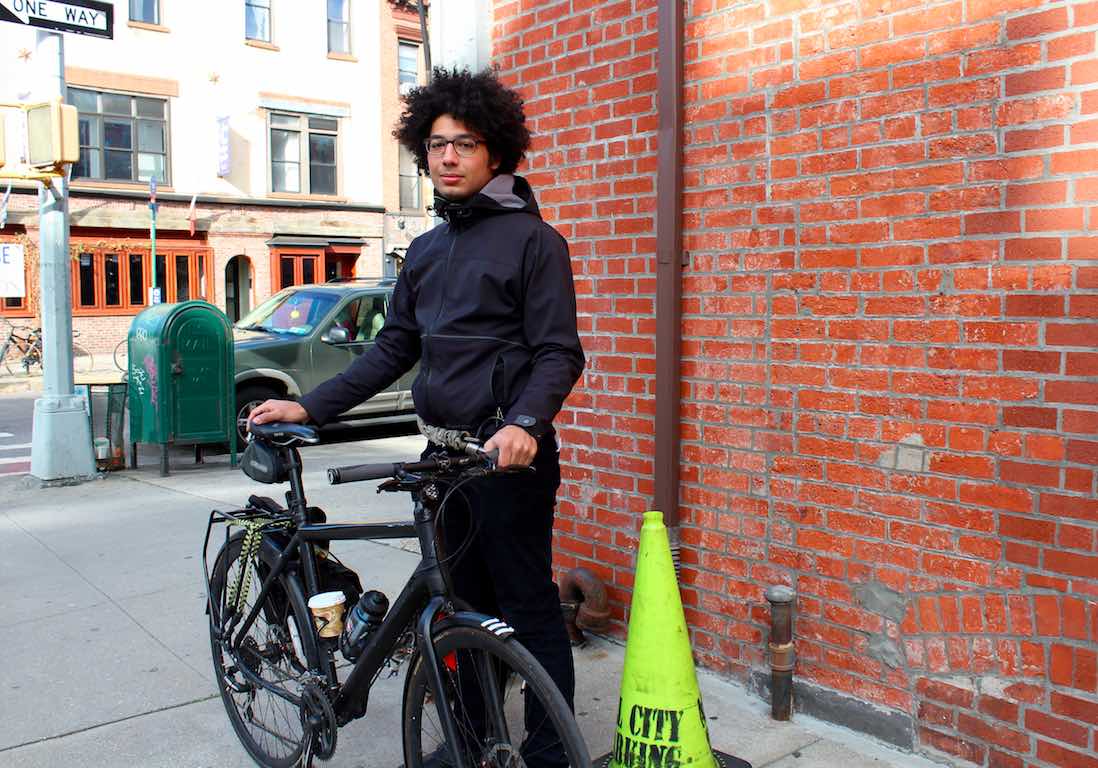
Most of his time, however, is spent finding ways to work together with community stakeholders. While he’s eager to discuss direct action tactics in TA meetings, his current focus is encouraging everyone to submit participatory budgeting proposals, under a system in which the New York City Council allows citizens to contribute their own ideas for how to spend part of the public budget.
He also holds a seat on the transportation committee for his community board and is a member of the Cobble Hill neighborhood association: a funny fit, he admits, “because it’s 95 percent old white homeowners who are very averse to the change that is happening in the neighborhood—which is the opposite of me.”
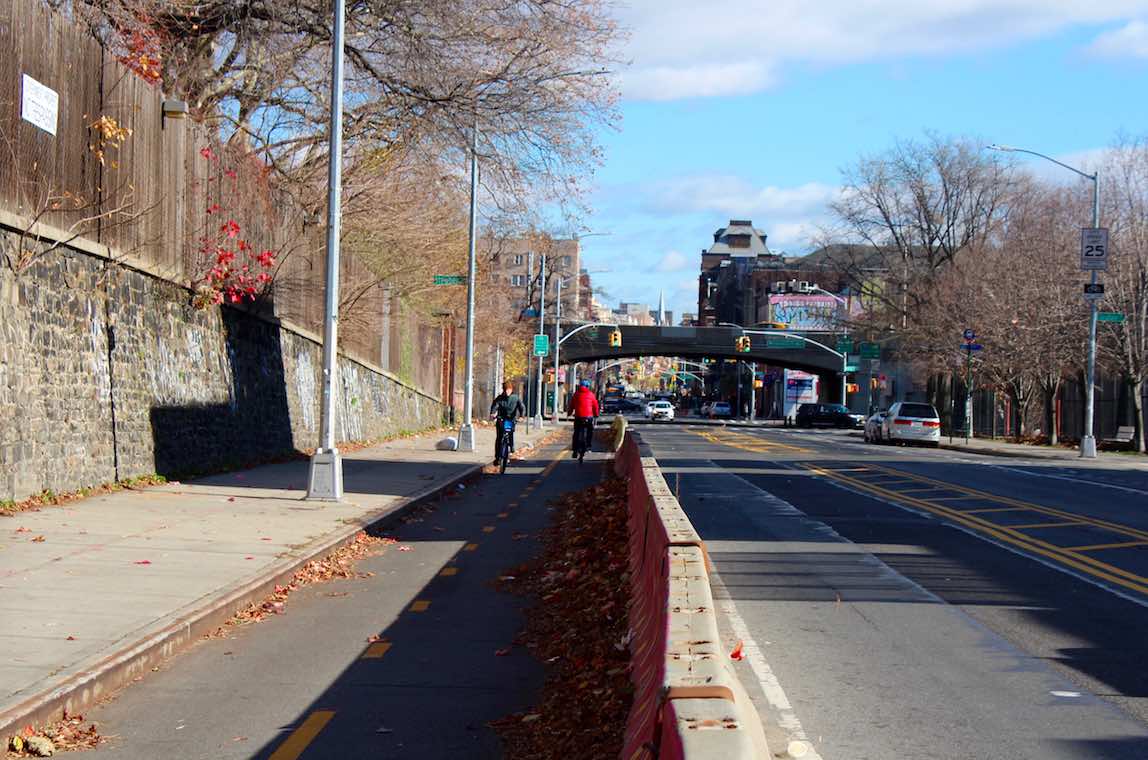
There’s a lot of patience involved in all this. A lot of showing up, and listening politely, and being ready to grab any small opportunity to make a difference. It is for this reason that the two traffic cones lying, seemingly abandoned, on the sidewalk on the corner diagonal from the tavern don’t fail to catch Chancey’s attention.
Before taking his leave for the night, he picks them up and places them in the southeast corner of the intersection, so that cars turning left won’t be able to cut too close to the curb. This, he explains, will protect pedestrians who may venture into the street as they wait to cross.
For at least tonight, he’s made the road a safer place.
Are you a cyclist in NYC? The author of this piece would like to hear from you — share your experiences here.




